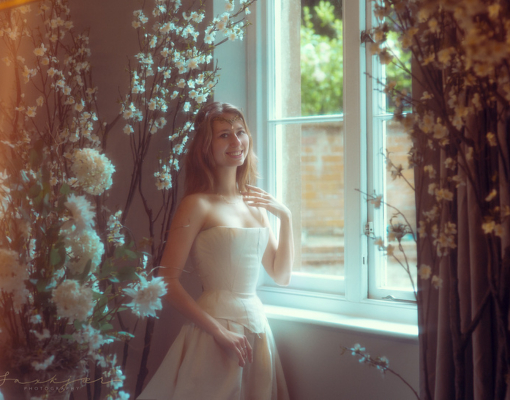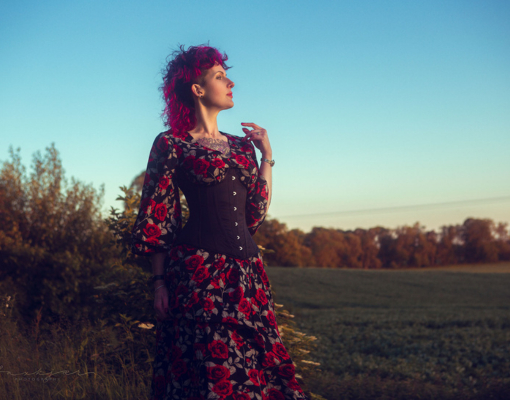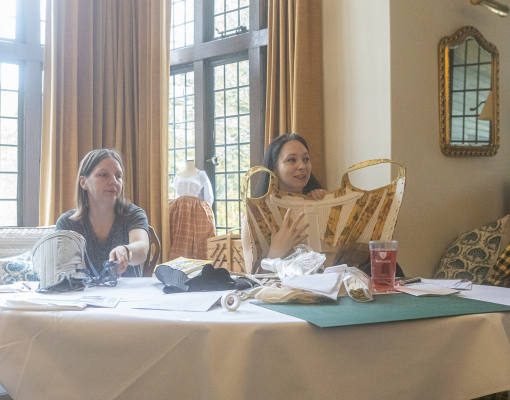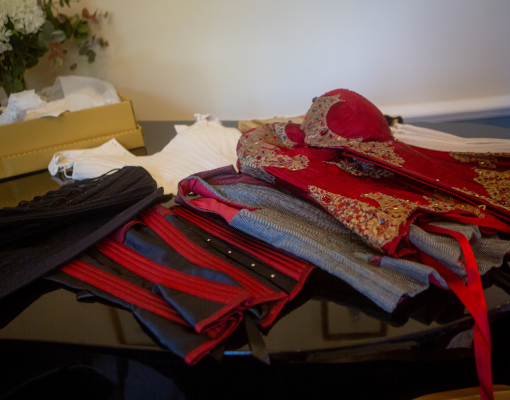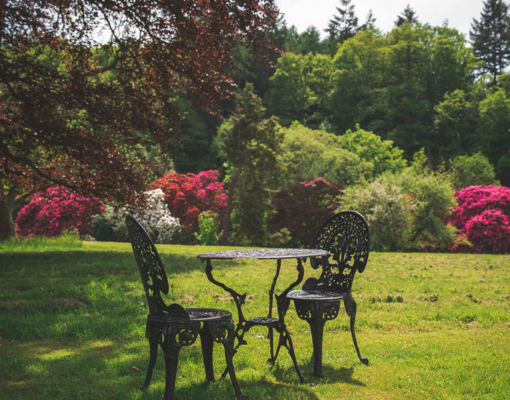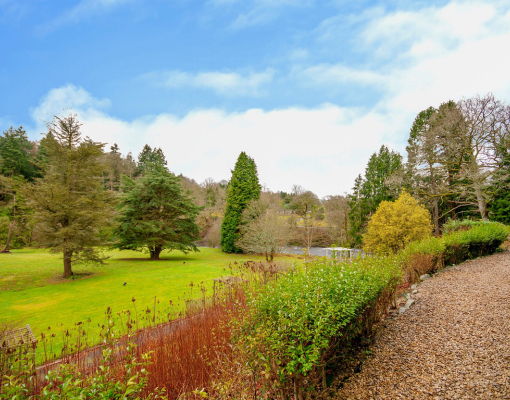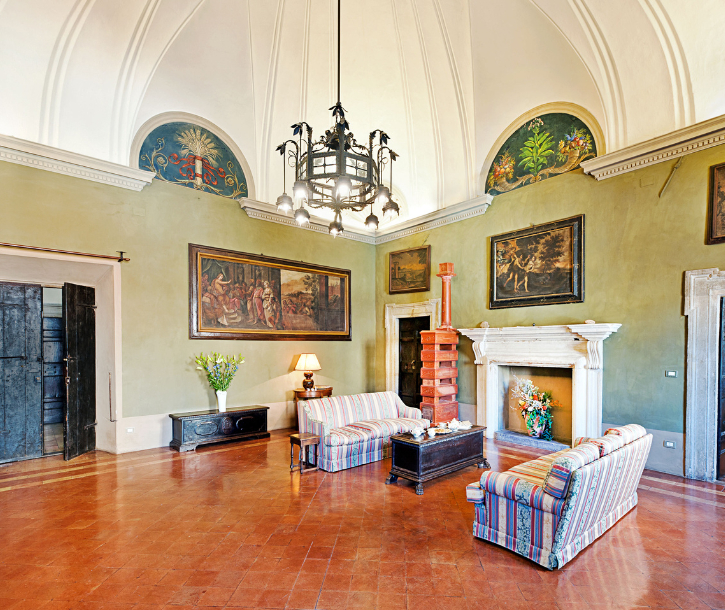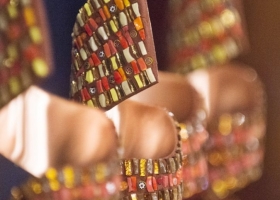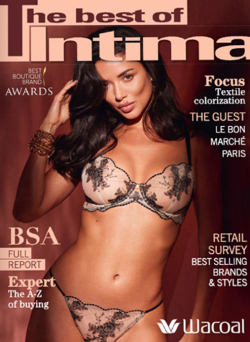
The Best ofIntima & Swim Edit
A captivating Victorian manor house is the perfect setting for a unique 4-day workshop, where a talented and passionate team guides guests through the art of corset-making. By the end of this creative journey, participants will leave with very own custom corset pattern—a one-of-a-kind keepsake from an unforgettable experience.

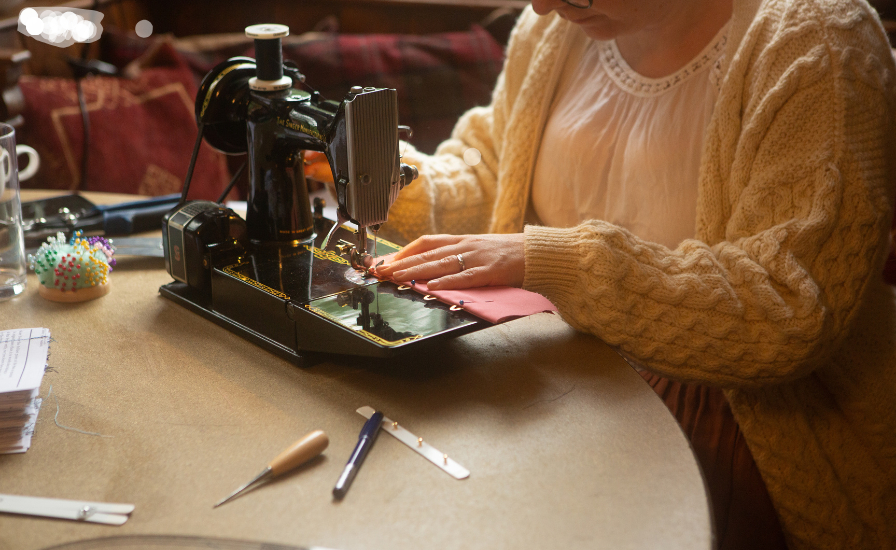
With a decade of experience in costume design for film and theatre, Emma Brackenbury faced a challenging turning point in 2019 while grappling with the repercussions of Covid. It was then that Niki Widdowson (now co-organizer of the retreats) revealed to her a long-held dream: attending a corsetry retreat. Inspired, they decided to bring that dream to life themselves. They scouted for a luxury venue and with just two month to the start date they put together the ideal workshop they would have wanted to attend themselves!

The first session sold out quickly, generating immense interest and setting the stage for a thriving venture. Today, their project has attracted participants from around the globe, drawn by the expertise of the instructors, the magical venue, and the vibrant, welcoming atmosphere that defines every event.

Nestled within 18 acres of serene parkland and with origins dating back to 406 AD, the late 19th century Caer Beris Manor invites visitors to step back in time and experience the grace of a bygone era. Exuding charm with its wood-panelled interiors and roaring fires, it offers bedrooms and suites meticulously designed to blend historic charm with modern comfort. During retreats the main parlor is thoughtfully arranged for sewing machines, and dedicated tables for pattern cutting ensuring ample workspace.
Each retreat features two highly experienced tutors who are available throughout the event: Emma and a second specialist, chosen based on whether the retreat focuses on corsets or stays. Past corsetry retreats have been led by acclaimed professionals such as experienced corsetiere Elizabeth (Beth) Moody of Moody Corsetry and professional corset maker Jennifer Garside of Wyte Phantom Corsetry.For stays-focused retreats, Emma collaborates with Ruth Watkin, a distinguished costume maker for film and a specialist in crafting museum replicas.

Following a welcome with drinks and nibbles guests jump straight into the first workshop: measuring. “This serves as an unexpected icebreaker” says Emma, “especially when you're in a room full of strangers and suddenly find yourself measuring each other's bodies. For many, understanding the protocol and language around body measurements is a new but invaluable skill, fostering a respectful and comfortable atmosphere.” After this introduction, everyone can enjoy a delicious evening meal served in the grand wood-panelled dining room, featuring a magnificent walk-in fireplace and mullioned windows.
Day two is dedicated to pattern drafting, offering participants two distinct approaches to choose from. At corset-focused events, Emma teaches flat pattern drafting, while Beth introduces the art of draping. At stays-focused* retreats, Emma again teaches flat drafting, while Ruth offers an alternative 3D method using half-scale paper cutouts. On the third day, participants move on to toiling—creating a mock-up from inexpensive fabric. They are shown how to assemble their toiles quickly yet accurately, with the tutors fitting each corset mock-up to ensure a perfect fit. Any necessary alterations are then translated back onto the original pattern, ensuring the final garment will be flawless.
The final day is all about construction, with workshops and demonstrations focused on the techniques needed to create a beautifully finished corset. These include hand basting the layers together, to make sure they sit smoothly on the body. Then it’s on to the different methods of inserting a busk**, from the most basic to more complex techniques for the more experienced, such as a busk with a placket at the back, or creating an invisible busk. Participants discover the different ways to encase the bones***within the corset, using different bone channels and seams. Finally, they will learn how to beautifully finish their corsets including, neatly binding the top and bottom edges, inserting the eyelets and flossing.

As well as delicious meals the retreats also include fireside talks from guest speakers in the evenings on topics such as fan-lacing with costume-maker Jema Hewitt, and a look at how industrialisation changed construction methods in corsetry from dress-historian Cat Miranda Ferreira. In the space of just a few years Emma and Niki's project has evolved from a one-time event into a thriving workshop venture attracting an audience ranging from self-taught home stitchers to professional costume makers who are only too keen to return and enjoy this opportunity.

*Also called a "whaleboned bodice," it is a clothing accessory from Spain. It appeared in France in the 16th century. Mainly popular in the 17th and 18th centuries, it was worn over a shirt as an undergarment beneath a dress. The "light" bodices, which were either minimally or not at all whaleboned but still made of rigid fabric, were worn in summer, for relaxation, or for less formal occasions. They were called "blanc corsets"—either because they were often made of simple white or off-white linen, or because "blanc" here means "empty" (of whalebones).
**A set of thin strips made of rigid material (formerly metal, wood, or ivory) inserted into corsets and corset undergarments…
***In the 19th century, whalebones were used to stiffen bras, corsets, and even umbrellas.
Credits:
Course photos by Elizabeth Moody and Kitty S Mortensen
Manor photos courtesy of Caer Beris.
Related articles:
Copyright 2025. All right reserved - Terms
